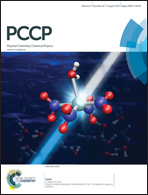Understanding the light soaking effect of ZnMgO buffer in CIGS solar cells
Abstract
This study investigated the mechanism underlying the light soaking effect of a ZnMgO buffer in Cu(In,Ga)Se2 (CIGS) solar cells, where the cell efficiency increased with an increase of light soaking time. The ZnMgO buffer layer was deposited by an atomic layer deposition method. With light soaking, the cell efficiency of ZnMgO/CIGS cells increased mainly by the increase of the fill factor and partly by the increase of the open-circuit voltage. With light soaking, the electron carrier concentration of the ZnMgO layer increased and the XPS intensity of the hydroxyl bond in the ZnMgO layer decreased. Based on the above results and the comparison of other buffers in literature, we assumed that the hydrogen atoms broken away from the hydroxyl bond by photon irradiation occupied the interstitial sites of the ZnMgO layer as a donor atom and also passivated the defects at the ZnMgO/CIGS interface. The increase of the fill factor and open circuit voltage was explained based on H doping in the ZnMgO layer and H passivation at the ZnO/CIGS interface.


 Please wait while we load your content...
Please wait while we load your content...